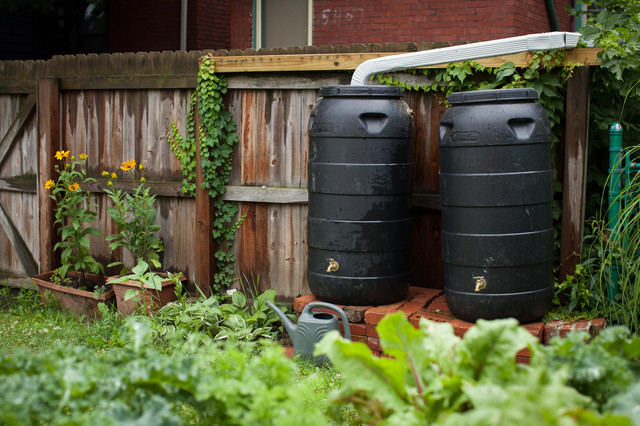
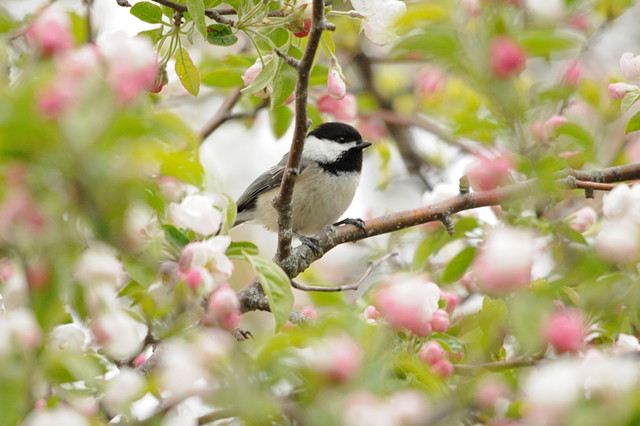
A satisfying way to save money and reduce your environmental footprint is to try growing portions of your own food. “[It] reduces your environmental impact and tastes that little bit better when you know you’ve grown it yourself,” Martin says. Depending on your garden’s size and conditions, carrots, potatoes, apples, berries and more are all possible to grow at home.
To support growing your own food, you’ll also want to encourage insects to visit your garden. “Pollinators are so very important to our gardens, as it’s their hard work that allows us to eat so well, so we need to do everything we can to encourage them in,” Probert says. Planting pollinator-attracting plants near your edible garden will draw and support these valuable visitors. “By having a flower-rich planting scheme, you’ll be providing them with a diverse range of nectar throughout the seasons.”
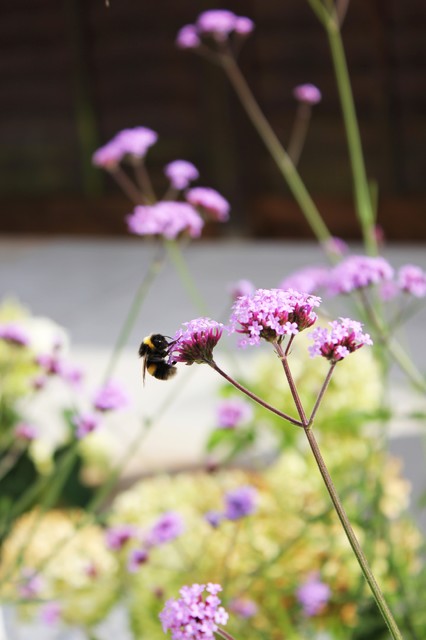
“One of the best ways to attract wildlife into your garden is to fill it with as many native plants as possible,” Martin says. Native wildflowers are well-adapted to the region, with Martin adding that this often makes them easier to grow and maintain than non-natives, and more resistant to pests. “They’re also ideal for attracting bees and butterflies” he says.
Shipman advises home gardeners to think about the entire year when designing their garden to attract wildlife. “Put in nectar-rich plants for the winter and spring, too — ideal for early bees on warmer days,” she says. “Herbs are often a good choice, as they’re highly attractive to insects,” Probert says, “and don’t forget a few night-scented flowers for moths.”
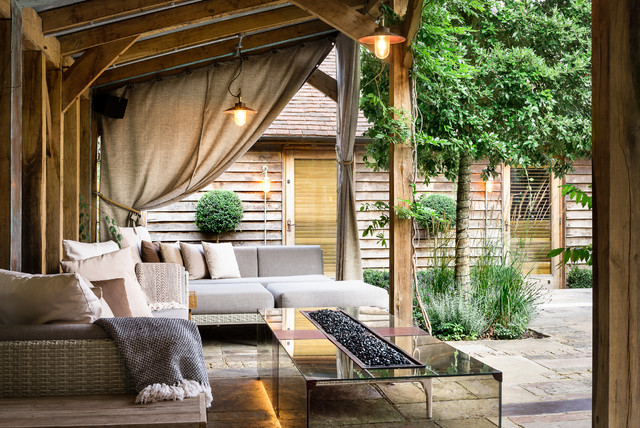
“You could help to reduce the amount of electricity used in your garden by choosing solar-powered lights and water features,” Pip says. These lights store energy produced by natural light during the day, releasing it at night when needed. “They’re improving all the time,” he says of the solar-powered lights’ performance and design styles. “They’re very easy to install.”
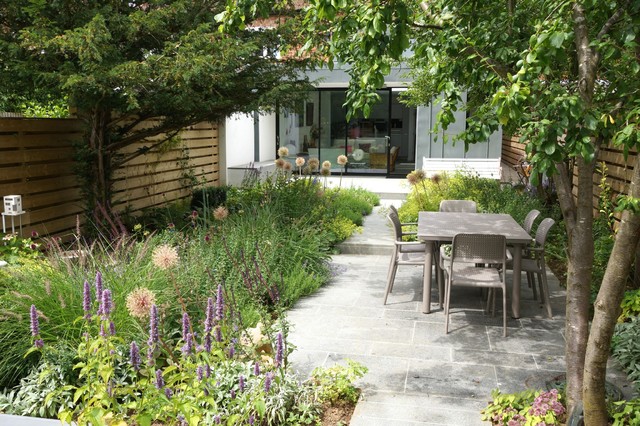
You can make your garden more connected, and thus more friendly to ground-dwelling native wildlife, by ensuring there’s access to surrounding gardens, helping to create a “green highway” for small mammals to safely travel around. By not welcoming wildlife, you’re reducing the diversity of your outdoor space. Martin suggests even cutting a small hole in your fence to help aid in this movement.
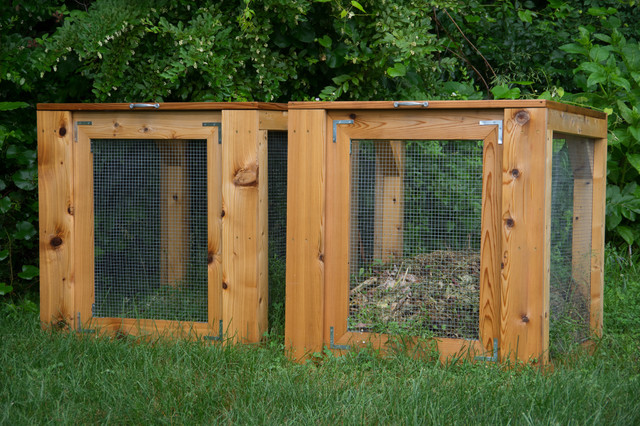
Instead of buying compost, consider making your own. “Creating your own garden compost is very easy to do, and it has great benefits for the garden,” Probert says. “By recycling garden and food waste, not only does it save rubbish going to landfill sites, but you can create a rich, moisture-retentive mulch. The following year, your plants will profit from this natural addition to the soil.”
Compost piles can benefit more than just plants. “Compost heaps are also a surprisingly valuable habitat for wildlife,” Martin adds. “They may help to attract a wide variety of creatures into your garden, ranging from earthworms and frogs to hedgehogs and lizards.”

Consider planting a tree if you have room in your garden. “Research has shown that gardens with trees are more attractive to wildlife than those without,” Martin says, adding that native species can deliver the greatest benefits. “They can provide additional benefits [for homeowners] too, such as shade and reduced noise pollution,” he says.
“Planting trees in your garden can also improve the purity of the air, which is really beneficial if you live in an urban setting,” Probert says. “If space permits, why not try planting a large tree, such as a birch, beech or magnolia, to produce oxygen and help remove harmful particles from the air?”
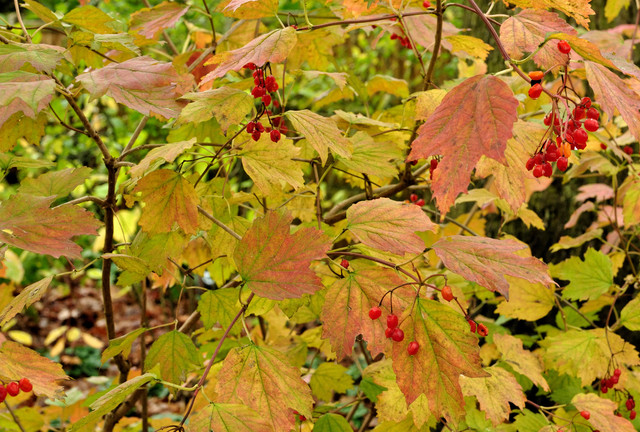
“Rather than gathering fallen leaves into plastic bags — which may take decades to decompose — and throwing them away, why not store them in a biodegradable leaf sack?” Martin asks. “Once they’ve decomposed, you’ll be left with natural leaf mold – a perfect fertilizer.”
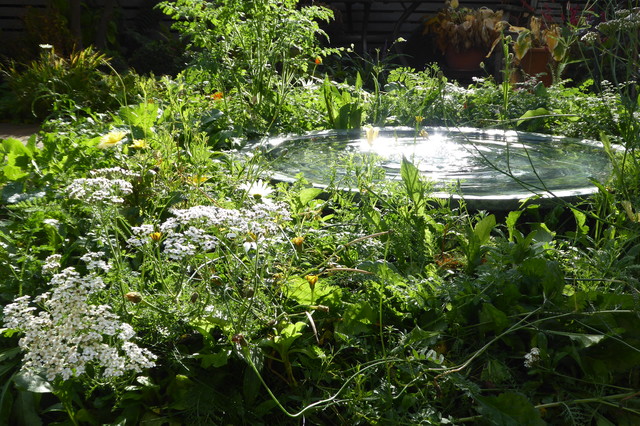
Garden water features are also valuable to wildlife. “A pond provides a home for amphibians and insects, as well as drinking and bathing water for birds and mammals,” Martin says. “If you don’t have room for a whole pond, a bird bath is a good option.”
In a very small garden, even just a dish of fresh water will keep animals and insects refreshed. “Ceramic plant saucers are ideal [for this], and they look attractive, too,” Shipman says. “You can get glazed, unglazed, plain terra cotta or painted terra cotta to suit your style. Insects will drink from these as well as mammals.”


“Water is a valuable resource and not one to be wasted, as every little drop counts,” Probert says. “Where possible, try to remove sprinkler systems or, if they’re necessary, set them on a timer for minimal use.” Drip systems can be a more efficient option. “There’s less waste, with the water going directly to the plant,” he says.
All three professionals advise using rainwater where possible to irrigate plants instead of taking it from a tap. Shipman suggests directing your roof’s downspout, if accessible, to a rain barrel in order to collect rainwater from the roof. “Choose the biggest volume you can accommodate,” she says.